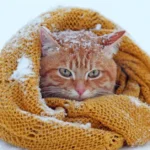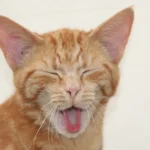Introduction:
You’re not alone if you’ve ever wondered whether your cat’s quirky habits are more than just a feline personality. Some cats spin in circles, ignore social interaction, or show intense sensitivity to sound or touch—behaviors that may seem similar to traits associated with autism in humans. But can cats have autism? Let’s explore how science explains your cat’s quirks, what’s normal feline behavior, and how to better understand those actions that might seem a bit unusual.
Can Cats Get Autism?
What Science Says About Autism in Cats
Defining Autism Spectrum Disorder (ASD)
Autism Spectrum Disorder is a complex neurological condition in humans that affects communication, behavior, and social interaction. It is diagnosed based on strict clinical criteria, including delayed speech, repetitive behavior, and difficulties understanding social cues.
Is Autism in Cats Comparable to Human Autism?
Currently, there is no scientific evidence that cats can be diagnosed with autism in the way humans can. Experts agree that while cats can display behaviors that resemble autistic traits, these behaviors often stem from different causes such as stress, genetics, or sensory preferences. It’s important not to project human conditions directly onto animals, as entirely different neurological systems influence their behavior.
Understanding Feline Behavior
What’s Considered Normal vs. Abnormal?
Cats are complex creatures, and many of their actions that may seem odd to humans are entirely natural in the feline world. For example, staring into space, hiding in unusual places, or being very particular about routines are all typical behaviors.
The Complexities of Cat Behavior
Cats behave based on instinct, environment, and individual personality. Unlike dogs, who are more socially wired, cats have a more solitary nature, which sometimes gets misunderstood as aloof or distant.
Factors That Influence How Cats Act
Genetics
Some behaviors are inherited. Certain breeds, like Siamese or Bengals, are known for being more vocal or active, which can appear obsessive or intense.
Environment
A cat’s surroundings play a huge role in how they behave. A noisy home, sudden changes, or lack of stimulation can cause stress and lead to behaviors that might be mistaken for something more profound.
Socialization in Early Life
Kittens that aren’t adequately socialized during their first weeks may grow into adult cats that are shy, fearful, or avoid human contact. This is not autism—it’s a lack of early exposure to people and other animals.
Behaviors in Cats That Might Seem Like Autism
Signs Often Mistaken for Autism in Cats
Repetitive Movements or Habits
Some cats may chase their tails, paw at invisible things, or engage in what looks like obsessive grooming. These actions might be due to boredom, anxiety, or neurological issues.
Lack of Social Interaction
Cats that avoid cuddling, eye contact, or interaction might be more independent. Each cat has a unique personality; introverted behavior is normal for many felines.
Sensory Sensitivities or Reactivity
If your cat flinches at loud noises or refuses to eat from certain bowls, it could be a sign of sensory preference or discomfort, not necessarily a deeper medical issue.
Can Autism Be Diagnosed in Cats?
Why There’s No Official Feline Autism Diagnosis
Challenges in Diagnosis
One of the biggest hurdles in applying human conditions to animals is the lack of verbal communication. Cats can’t describe their feelings, so diagnosis must rely entirely on observation.
Lack of Clinical Criteria for Animals
There are no set diagnostic tools or tests to determine autism in pets. While some studies have looked at repetitive behaviors in animals, these do not confirm a link to autism.
How to Support a Cat With Unusual Behavior
Practical Tips for Home Care
Creating a Safe, Stimulating Environment
Provide your cat with a predictable routine, safe hiding places, and interactive toys. This helps reduce anxiety and keeps them mentally engaged.
Reducing Stress and Overstimulation
Avoid sudden changes, loud noises, or chaotic environments. Give your cat space when needed and watch for signs of stress, like flattened ears or twitching tails.
When to Get Professional Help
Consulting a Veterinarian or Behaviorist
If your cat displays consistent odd behaviors—like extreme reactivity, compulsive grooming, or avoidance of food or water—consult a vet. A veterinary behaviorist can help determine if there’s a medical or psychological issue behind the behavior.
Frequently Asked Questions:
Can a Vet Diagnose My Cat With Autism?
No. Autism is a human condition and cannot be diagnosed in cats. However, a vet can help identify behavioral or neurological issues.
What Should I Do If My Cat Displays Odd Behaviors?
Start by observing the behavior and its triggers. Provide comfort, minimize stress, and contact your vet to rule out medical problems.
Are There Medical Conditions That Mimic Autism in Cats?
Yes. Conditions like hyperesthesia syndrome, OCD-like behaviors, or even partial seizures can result in repetitive or strange behaviors.
Do Cats With These Traits Need Special Care?
They may benefit from a calm, structured environment. Enrichment toys, gentle routines, and avoiding stressors can significantly improve their quality of life.
Conclusion:
Unusual behaviors in cats are not a sign of autism, but they can indicate other health or emotional needs. Understanding your cat’s body language and personality is key to helping them thrive.







GIPHY App Key not set. Please check settings